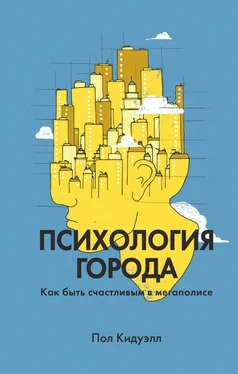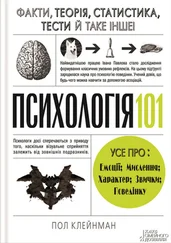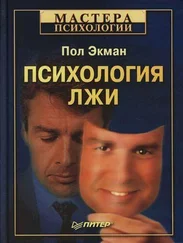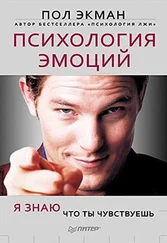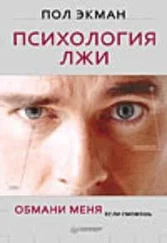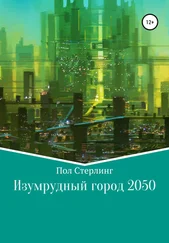Нawkins J. L. et al. Allotment gardening and other leisure activities for stress reduction and healthy aging // HortTechnology. 2011. Vol. 21 (5). Pp. 577–585.
Thompson C. W. et al. More green space is linked to less stress in deprived communities: Evidence from salivary cortisol patterns // Landscape and Urban Planning. 2012. Vol. 105 (3). Pp. 221–229.
Shalev I. Pictorial and mental arid landscape images reduce the motivation to change negative habits // Journal of Environmental Psychology. 2016. Vol. 45. Pp. 30–39.
Van den Berg A. E., указ. соч.
Burden A. How public spaces make cities work, ted.com, Architecture: https://www.ted.com/talks?sort=newest&topics%5B%5D=architecture&q=Burden.
Volker S., Kistemann T. The impact of blue space on human health and well-being — Salutogenetic health effects of inland surface waters: A review // International Journal of Hygiene and Environmental Health. 2011. Vol. 214 (6). Pp. 449–460.
White M. et al. Blue space: The importance of water for preference, effect, and restorativeness ratings of natural and built scenes // Journal of Environmental Psychology. 2010. Vol. 30 (4). Pp. 482–493.
Kweon B.-S. et al. Anger and stress: the role of landscape posters in an office setting // Environment and Behavior. 2008. Vol. 40 (3). Pp. 355–381.
Wheeler B. W. et al. Does living by the coast improve health and wellbeing? // Health & Place. 2012. Vol. 18 (5). Pp. 1198–1201.
White M. P. et al. Coastal proximity, health and well-being: results from a longitudinal panel survey // Health & Place. 2013. Vol. 23. Pp. 97–103.
Ashbullby K. J. et al. The beach as a setting for families’ health promotion: A qualitative study with parents and children living in coastal regions in Southwest England // Health & Place. 2013. Vol. 23. Pp. 138–147.
Woodman E., Harper P., Mollard M. Architecture & Water: Part 1 — The river as city and landscape // Architectural Review. 2014. 21 October.
Eng K. A jewel of the city: Aziza Chaouni on restoring the Fez River // TED Blog, 4 April 2104 // http://blog.ted.com/from-an-open-sewer-to-a-jewel-of-the-city-aziza-chaouni-on-uncovering-and-restoring-the-fez-river/.
Thompson Coon J. et al. Does participating in physical activity in outdoor natural environments have a greater effect on physical and mental wellbeing than physical activity indoors? A systematic review // Environmental Science & Technology. 2011. Vol. 45 (5). Pp. 1761–1772.
Caddick N., Smith B., Phoenix C. The effects of surfing and the natural environment on the well-being of combat veterans // Qualitative Health Research. 2015. Vol. 25 (1). Pp. 76–86.
Sommer R. Studies in personal space // Sociometry. 1959. Vol. 22 (3). Pp. 247–260.
Dębek M. What drives shopping mall attractiveness? // Polish Journal of Applied Psychology. 2015. Vol. 13. Pp. 67–118.
Patynen J., Lokki T. Concert halls with strong and lateral sound increase the emotional impact of orchestra music // The Journal of the Acoustical Society of America. 2016. Vol. 139 (3). Pp. 1214–1224.
Barrett P. The impact of classroom design on pupils’ learning: Final results of a holistic, multi-level analysis // Academy of Neuroscience for Architecture (ANFA) article. 2015. March 11.
Kim J., de Dear R. ‘Workspace satisfaction: The privacy — communication tradeoff in open-plan offices’, Journal of Environmental Psychology 36, 2013, pp. 18–26.
https://www.dezeen.com/2013/02/15/google-tel-aviv-by-camenzind-evolution/.
Pejtersen J. et al. Indoor climate, psychosocial work environment and symptoms in open-plan offices // Indoor Air. 2006. Vol. 16 (5). Pp. 392–401.
Maher A., von Hippel C. Individual differences in employee reactions to openplan offices // Journal of Environmental Psychology. 2005. Vol. 25 (2). Pp. 219–229.
Haapakangas A., Hongisto V., Hyona J. et al. Effects of unattended speech on performance and subjective distraction: The role of acoustic design in open-plan offices // Applied Acoustics. 2014. December. Vol. 86. Pp. 1–16.
Звуки голосов заглушали розовым шумом. Он похож на белый, но с одинаковой громкостью на всем диапазоне частот.
В тесты на кратковременную память входила задача n-назад. Участнику показывают последовательность букв, и он должен нажать кнопку, если заданная буква встречалась 1 позицию назад (1-назад) или 2 позиции назад (2-назад).
Jahncke H. et al. Openplan office noise: Cognitive performance and restoration // Journal of Environmental Psychology. 2011. Vol. 31 (4). Pp. 373–382.
Foster R. G., Hankins M. W., Peirson S. N. Light, photoreceptors, and circadian clocks // Circadian Rhythms: Methods and Protocols. 2007. Pp. 3–28.
Munch M. et al. Effects of prior light exposure on early evening performance, subjective sleepiness, and hormonal secretion // Behavioral Neuroscience. 2012. Vol. 126 (1). P. 196.
Hawes B. K. The effects of fluorescent versus LED lighting on soldier tasks in military tents // Proceedings of the Human Factors and Ergonomics Society Annual Meeting. SAGE Publications, 2014. Vol. 58 (1).
Hoffmann G. et al. Effects of variable lighting intensities and colour temperatures on sulphatoxymelatonin and subjective mood in an experimental office workplace // Applied Ergonomics. 2008. Vol. 39 (6). Pp. 719–728.
Raanaas R. K. et al. Benefits of indoor plants on attention capacity in an office setting // Journal of Environmental Psychology. 2011. Vol. 31 (1). Pp. 99–105.
Bako-Biro Z. et al. Ventilation rates in schools and pupils’ performance // Building and Environment. 2012. Vol. 48. Pp. 215–223.
Pegas P. N. et al. Could houseplants improve indoor air quality in schools? // Journal of Toxicology and Environmental Health Part A. 2012. Vol. 75.22–23. Pp. 1371–1380.
Kwallek N. et al. Impact of three interior color schemes on worker mood and performance relative to individual environmental sensitivity // Color Research and Application. 1997. Vol. 22 (2). Pp. 121–132.
Tom S. Managing energy and comfort: Don’t sacrifice comfort when managing energy // ASHRAE Journal. 2008. Vol. 50.6. P. 18.
Де Боттон А. Архитектура счастья. Как обустроить жизненное пространство. М.: Арт-транзит, Классика-XXI, 2013.
Читать дальше
Конец ознакомительного отрывка
Купить книгу
